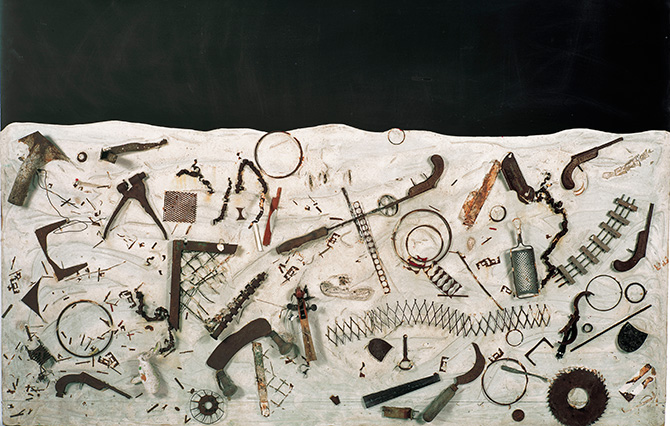PAINTING VIOLENCE
GALLERY 305
“Painting calmed the chaos that shook my soul. It was a way to tame those dragons that have appeared throughout my work.”
In the mid-1950s Niki de Saint Phalle decides to devote her life to art, choosing to be a self-taught artist. Through numerous trips to Europe, where she frequented the Parisian art and literary scene as well as that of American expatriates, she quickly became a cultivated artist of her time. In the late 1950s, she executed a series of large format paintings that drew from two visual cultures: on one hand that of Old Europe, where history confronted the new avant-garde, and on the other the most striking advances in American art. The wide, flattened perspective of her large paintings was inspired by the Italian Trecento. Their rough surfaces recall the “materialists” Jean Fautrier and Jean Dubuffet; their black and white skies dotted with spots of paint evoke the splatters of Jackson Pollock, and the objects affixed to their surfaces bring to mind the “Combine Paintings” of Jasper Johns and Robert Rauschenberg. From one piece to the next Saint Phalle constantly reconciles two contradictory atmospheres: on the one hand violence and chaos, and on the other playfulness and joie de vivre.

